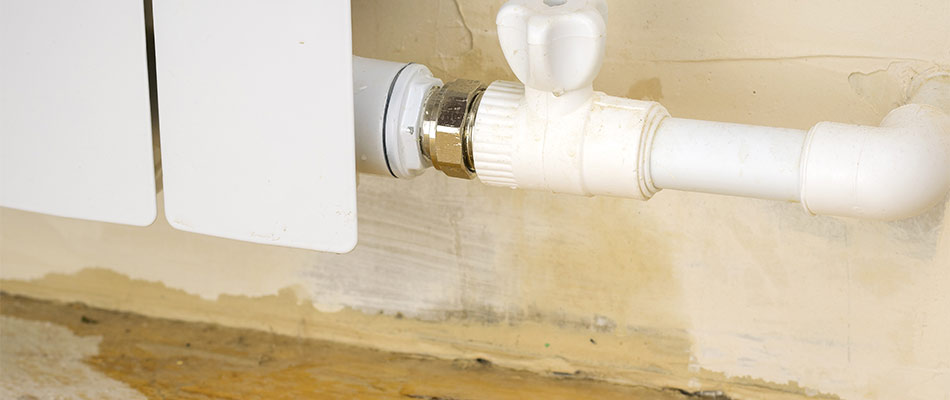The article down below relating to Leaking water lines is without a doubt interesting. You should check it out.

Early detection of leaking water lines can alleviate a prospective disaster. Some little water leaks might not be visible.
1. Take A Look At the Water Meter
Inspecting it is a proven means that helps you find leakages. If it relocates, that indicates a fast-moving leak. This indicates you might have a slow leak that might also be below ground.
2. Inspect Water Usage
If you detect unexpected modifications, regardless of your intake being the same, it indicates that you have leakages in your plumbing system. An unexpected spike in your costs shows a fast-moving leak.
Meanwhile, a consistent boost on a monthly basis, even with the very same behaviors, reveals you have a slow-moving leakage that's likewise slowly escalating. Call a plumber to completely check your home, particularly if you feel a cozy location on your floor with piping underneath.
3. Do a Food Coloring Test
When it pertains to water usage, 30% comes from commodes. Test to see if they are running correctly. Drop specks of food shade in the storage tank and wait 10 mins. If the shade somehow infiltrates your bowl during that time without flushing, there's a leak in between the container and also dish.
4. Asses Outside Lines
Don't forget to examine your outside water lines too. Examination spigots by connecting a garden tube. Must water seep out of the connection, you have a loosened rubber gasket. Change this as well as make sure all links are limited. It will help get it properly checked out as well as maintained each year if you've obtained a lawn sprinkler system. One tiny leakage can lose lots of water and also surge your water bill.
5. Assess the situation as well as inspect
Property owners must make it a habit to check under the sink counters as well as also inside closets for any kind of bad odor or mold and mildew growth. These 2 warnings indicate a leak so timely focus is required. Doing routine evaluations, even bi-annually, can conserve you from a significant issue.
Check for discolorations and damaging as many appliances as well as pipelines have a life expectancy. If you think leaking water lines in your plumbing system, do not wait for it to intensify.
Early discovery of dripping water lines can reduce a prospective catastrophe. Some little water leakages might not be visible. Examining it is a proven method that aids you discover leaks. One little leak can squander lots of water and spike your water costs.
If you believe leaking water lines in your plumbing system, do not wait for it to intensify.
How to Know If Your Home Has a Hidden Leak
Water Meter Reveals Inexplicable Water Usage
If you’d like to test whether or not there’s a leak somewhere in your home, you can do this using your water meter. Here is how to conduct the test:
Don’t use any water in your home for at least 30 minutes; this also means not turning on faucets or water-using appliances.
Go outside, and check your water meter for activity.
If your water meter shows that there was activity, even though no one was using any water, this proves that there is a leak in your home.
Visible Mold or Mildew Growth
Leaks behind walls create moist, dark environments that allow mold and mildew to grow and thrive. Eventually, you might see mold growth forming on the wall closest to a hidden leak.
If mold is growing in an area that receives a high amount of moisture, such as a bathroom, it may simply be an indication that better ventilation is needed. However, if you see mold growth on a wall or the ceiling in an area where you would not expect, you probably have a hidden leak.
Musty, Mildew Odor
Sometimes you might not be able to see the mold or mildew that is growing as a result of a leak. However, the smell can give the problem away just as easily. If you catch a whiff of something musty, there’s a good chance that old water is collecting somewhere in your home that you can’t see.
Stained/Warped Walls, Ceilings, or Floors
When your home soaks up water, a variety of red flags can become visible, including ceiling stains, bubbling drywall, warped walls, and sagging floors. While these issues can be caused by excess humidity, they can also be signs that a pipe or plumbing connection has started leaking behind your walls.
Inexplicably High Water Bill
After a while, you get a general sense for what your water bill should be. If you own a pool or sprinkler system, your bill will tend to be higher during summer. However, if you receive a water bill that seems especially high, and you can’t figure out what caused it, then you may have a hidden leak somewhere that’s increasing your bill.
https://www.plumbingjoint.com/blog/2019/july/how-to-know-if-your-home-has-a-hidden-leak/

We hope you liked our article about Locating water leaks. Thanks a lot for taking a few minutes to browse our blog post. Do you know anybody else who is curious about the topic? Please feel free to share it. Thanks a lot for your time. Please visit our site back soon.
Comments on “Just how to Check If Your Home Has a Concealed Leakage”